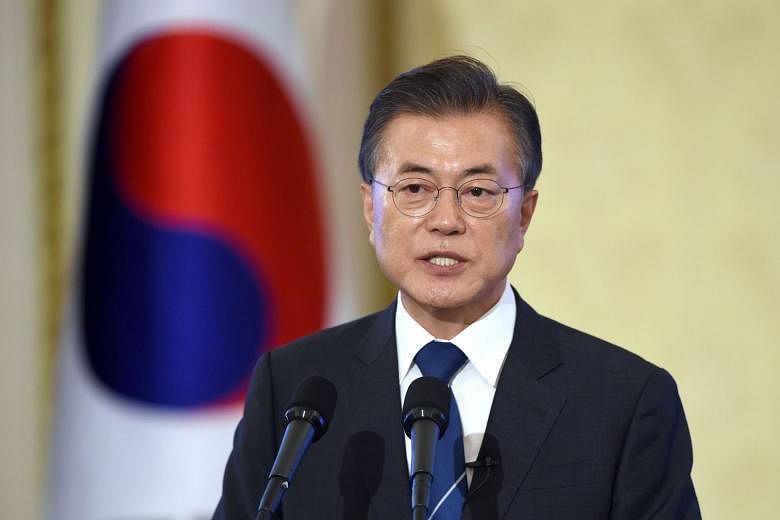Since South Korean President Moon Jae In took office in May, his administration has made elevating relations with South-east Asia a major foreign policy priority.
Though this rhetoric has already begun to translate into reality, how it eventually plays out will be contingent on the management of several challenges.
To be sure, South Korea's interest in the region is not new. Even before Mr Moon came to office, Asean was already South Korea's second-largest trade and investment partner, and Seoul had long recognised that South-east Asian states play a key role in the management of diplomatic issues such as North Korea and in the broader objective of diversification in its foreign policy. The previous two South Korean presidents had also included either Asean as a whole or key states like Indonesia as part of their wider middle-power diplomatic efforts.
Yet there had also long been a recognition that Seoul had not invested anywhere near as much strategically in Asean as a regional bloc relative to the other North-east Asian Asean Plus Three dialogue partners, China and Japan. In this respect, Mr Moon's move is significant, since he has pledged to elevate ties to the level of those Seoul enjoys with the four major powers surrounding the Korean peninsula: the United States, China, Japan and Russia.
Since then, he has dispatched a special envoy to Asean immediately following his inauguration; convened an international conference on Asean-South Korea ties in Seoul and opened the Asean Culture House in Busan. And just last month, during his first trip to the region amid a busy round of Asian summitry, he delivered major speeches in Indonesia and the Philippines as part of a roll-out of his policy.
In his speech at the Asean Business and Investment Summit in the Philippine capital Manila, Mr Moon focused largely on the gains both sides could achieve in the economic and people-to-people realms, from boosting South Korea's funding to key regional and sub-regional initiatives to easing visa restrictions.
These steps certainly hold promise but, first, as with all new initiatives, sustaining the initial momentum will be key.
And that will be contingent on other factors, such as its relations with bigger powers like China and also the bandwidth Seoul has amid other crises and challenges, chief among them being North Korea.
That feeds into the second challenge, which relates to resourcing. To his credit, Mr Moon has already pledged to double the Asean-South Korea Cooperation Fund and triple the South Korea-Mekong Cooperation Fund.
Yet South Korean officials are themselves aware that it will take much more to galvanise ties with Asean, particularly if Seoul wants to close the gap with Beijing and Tokyo which are ahead in key areas like infrastructure. Questions remain as to whether South Korea has what it takes in areas like public diplomacy.
The third and final challenge concerns calibration, whether it be between the different realms of the Asean-South Korea relationship, or among the various constituent South-east Asian states. For instance, while Mr Moon's rhetorical framing of Asean-South Korea ties stands on what he has termed a "3P community" - people, prosperity and peace - in reality, the focus so far has been more on the economic and people-to-people components.
Of course, Seoul has a key role to play in priority areas such as transportation, energy and information technology. Yet such an imbalance also risks reinforcing the view that the ties are primarily economic in nature rather than strategic. Getting past this will require making actual inroads on key security issues like terrorism and cyber security, whether through efforts involving Seoul itself or with the help of other regional partners.
It is still early days in Mr Moon's new Southern Policy, and we are likely to see more meat on the bones next year, especially as he follows through with his commitment to visit all 10 South-east Asian countries. Yet as we have seen with other new initiatives undertaken by Asean dialogue partners, it is wise to be cognisant of not just the opportunities that might power ties, but also the challenges that might imperil them.
- The writer is associate editor of The Diplomat magazine based in Washington, and a doctoral candidate at the Fletcher School of Law and Diplomacy at Tufts University researching Asian security issues.

